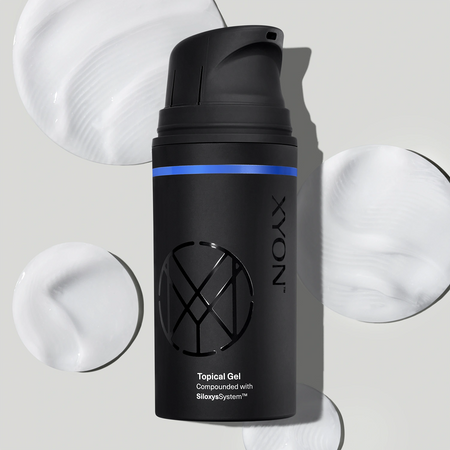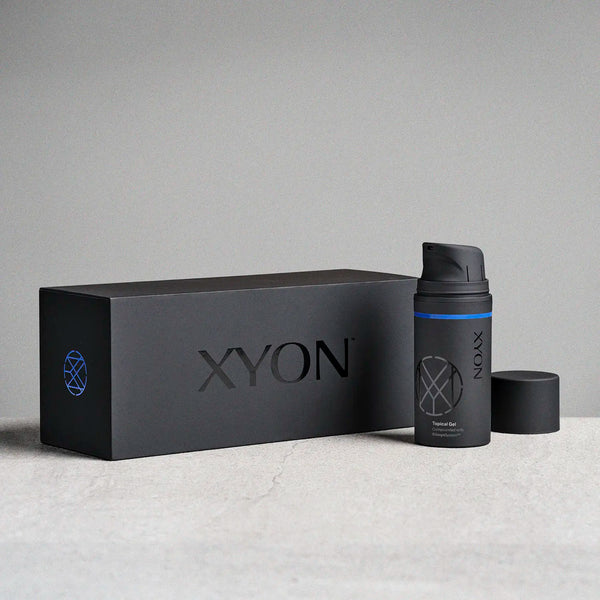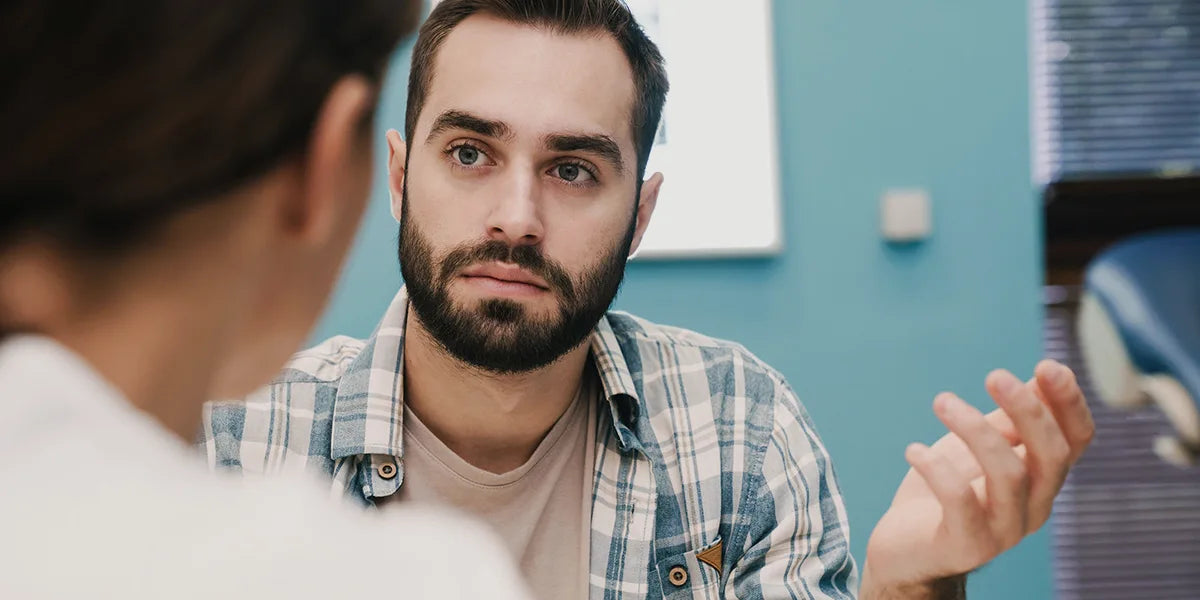You’ve decided to do something about hair loss, but with so many different treatment options, how do you know which is right for you? Finasteride and minoxidil are two of the most well-known pharmaceuticals used to treat androgenetic alopecia. However, they differ in mechanism, efficacy and side effects. A doctor can work with you to determine if finasteride or minoxidil is the best fit. Research tells us that in some cases, you might even benefit from using finasteride and minoxidil together.
What are the differences between finasteride and minoxidil?
Let’s break down the essential differences between these two hair loss treatments.
How does finasteride work?
Finasteride is a 5-alpha reductase inhibitor. It was designed to bind to the enzyme, 5-alpha reductase and stop it from converting testosterone into a related hormone, dihydrotestosterone (DHT). We want to control levels of DHT, because elevated concentrations have been found to trigger a process called follicular miniaturization, which refers to the shrinking of hair follicles over time and is the hallmark of androgenetic alopecia.
The bottom line: Finasteride is an agent that addresses the root cause of male pattern hair loss. It has the highest likelihood of helping you halt the progression of thinning hair.


Why choose one when you can have both?
XYON offers finasteride + minoxidil, a powerhouse duo. Connect with a doctor to find out whether it's right for you.
How does minoxidil work?
Minoxidil is technically a blood pressure-lowering pill. Unlike finasteride, which has an enzyme target and lowers DHT, minoxidil’s beneficial effects on hair loss are less cut and dry. It’s a vasodilator, which means that it helps increase blood flow and by extension, nutrient and oxygen exchange. Minoxidil has also been found to increase production of a molecule called VEGF, which stimulates the growth of new blood vessel networks around the hair follicles. It may also directly aid in hair growth by prolonging the active growth phase of the hair growth cycle (Badri et al., 2023).
The bottom line: Minoxidil supports the growth of existing and new hairs. It may slow the progression of male pattern hair loss and a small subset of patients may experience new growth.
Is finasteride or minoxidil more effective for hair loss?
The answer to whether finasteride or minoxidil are more effective depends on whether you’re looking at mono/single or combination therapy. In comparisons of finasteride monotherapy to minoxidil monotherapy, data show that finasteride comes out on top for efficacy. In one long term study, participants who stuck to finasteride treatment for 5 years observed significant hair regrowth and stabilization of hair loss (Nestor et al., 2021). A separate year-long study found that oral finasteride once daily resulted in better treatment outcomes compared to twice daily application of topical minoxidil. Researchers found that 80.5% and 59% of men who were treated with finasteride and minoxidil respectively, saw improvement in hair loss (Hu et al., 2015).
But this isn’t to say that minoxidil as a monotherapy can’t be effective in treating hair loss. Remember, there is a difference in the mechanism through which hair loss is improved. Trials that have compared minoxidil 2% and 5% to placebo found that patients who received either concentration of minoxidil experienced a 70% greater improvement in mean hair density measured at 16 and 26 weeks of treatment (Nestor et al., 2021). The higher 5% concentration has also been associated with greater hair regrowth compared to the lower 2% formulation (Olsen et al., 2007).
Can I use finasteride and minoxidil together?
Wondering whether it might be advantageous to use finasteride and minoxidil at the same time? Study data suggest that combination therapy may be the way to go to make the most of your hair loss treatment.
One study, which utilized a topical solution containing 0.25% finasteride and 3% minoxidil, found that administration of this solution produced more significant improvement in hair regrowth compared to a 3% minoxidil solution, alone. This improved efficacy was apparent in increased hair density and hair diameter, as well as global photographic assessments. These differences were noticeable as early as the fourth month of treatment and as many as 90% of patients who received the combination therapy experienced some degree of improvement (Suchonwanit et al., 2018).
Are the side effects from finasteride the same as minoxidil?
Finasteride and minoxidil do not share the same side effects. Let’s talk about the side effects of minoxidil, first.
The side effects of topical minoxidil generally affect the skin and can include irritant or contact dermatitis, redness or excess facial hair growth. Data suggests that the risk of experiencing these side effects increases with higher concentrations of minoxidil (Ebner & Muller, 1995). In comparison, oral minoxidil is associated with more systemic side effects. These can include changes in heart rate, lowering of blood pressure, headache, increased body hair, excessive facial hair growth (in women) and fluid retention or swelling in the lower extremities (Panchaprateep & Lueangarun, 2020). Individuals with a history of cardiovascular disease or women who may become pregnant may need to take extra precautions if they choose to take minoxidil.
We have an entire article dedicated to the side effects of finasteride, but we’ll summarize the essentials here. For oral finasteride, the most frequently reported side effects concern changes in sexual performance and desire (e.g. erectile dysfunction, ejaculation disorders, decreased libido) (Hirshburg et al., 2016). The risk of developing these side effects is thought to be lower with topical vs oral finasteride. Like topical minoxidil, topical finasteride may cause skin irritation and redness. Women who are, or may become pregnant must avoid coming into contact with finasteride.
Summary:
When comparing finasteride to minoxidil differences in drug mechanisms need to be taken into account when assessing efficacy and side effects. The reality is that both medications can have a place in an effective treatment regimen for androgenetic alopecia.
Finasteride targets the root cause of balding in men (DHT levels) and helps stabilize and prevent further progression of hair loss, while minoxidil helps create conditions for optimal hair growth (e.g. improving blood flow and nutrient exchange, stimulating the active growth phase of the hair cycle).
Research tells us that combining the two can help maximize hair growth potential and that opting for topical formulations of these medications may help reduce your risk of developing side effects. Ultimately, the decision to take one or both, requires a consultation with a healthcare professional, who will take your medical history and individual risk for side effects into account when developing your ideal treatment plan.




